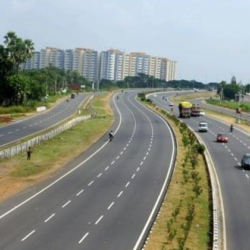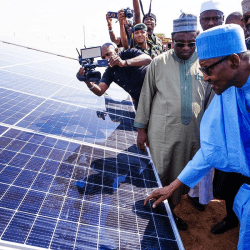The Aysha III Wind Power Project is a large-scale wind energy development aimed at increasing Ethiopia’s renewable energy generation capacity. The project will feature a 150 MWac wind farm and a newly built High Voltage (HV) transmission line to transport the generated electricity.
- Project Capacity: 150 MWac
- Land Area: 9,500 hectares
- Investment Type: Public-Private Partnership (PPP)
- Total Cost: $235.47 million
- Contracting Authority: Ethiopian Electric Power (EEP)
- Proposed Duration: 20-30 years
- Current Status: Feasibility study ongoing
- Region Covered: Somali Regional State
Key Stakeholders in the Project
Several key entities are involved in the development of this wind power project:
- Ethiopian Electric Power (EEP): Overseeing project implementation
- Public-Private Partnership Directorate General: Managing the PPP structure
- Private Investors: Responsible for financing, constructing, and operating the wind farm under a Build-Operate-Transfer (BOT) model
Project Scope and Objectives
The Aysha III Wind Power Project aims to:
✅ Increase Ethiopia’s renewable energy capacity by 150 MW
✅ Enhance energy security and reduce dependency on fossil fuels
✅ Support economic growth by providing a stable electricity supply
✅ Facilitate private sector participation in Ethiopia’s energy sector
✅ Reduce carbon emissions by expanding clean energy generation
Financial Structure and Cost Estimation
The total estimated cost of the project is $235.47 million, funded through a PPP model, where private investors will finance, build, and operate the wind farm.
| Project Component | Details |
|---|---|
| Wind Power Capacity | 150 MWac |
| Estimated Cost | $235.47 million |
| Investment Model | Build-Operate-Transfer (BOT) |
| Project Duration | 20-30 years |
| Revenue Source | Electricity sales & tariffs |
Under the BOT model, private investors will recover their investment through electricity tariffs before transferring ownership to the Ethiopian government.
Procurement Mode and PPP Structure
The Ethiopian government has opted for competitive bidding to select a private partner for the project. The Build-Operate-Transfer (BOT) model will follow these steps:
🔹 Design: The private sector partner will develop the wind farm layout
🔹 Build: The investor will construct the wind power plant and transmission infrastructure
🔹 Finance: Private capital will fund the project’s development
🔹 Operate: The private investor will manage power generation and distribution
🔹 Maintain: The wind farm will be maintained by the private operator
🔹 Transfer: After the concession period, the wind farm will be handed over to the Ethiopian government
Benefits of Public-Private Partnerships (PPPs) in Renewable Energy
PPPs offer several advantages in the energy sector, including:
✔️ Reduced financial burden on the government
✔️ Access to private sector expertise and efficiency
✔️ Accelerated project implementation
✔️ Enhanced power generation capacity
✔️ Long-term sustainability through private sector management
Challenges in PPP Implementation
Despite its benefits, PPP implementation in Ethiopia’s energy sector faces challenges:
⚠️ Regulatory and policy uncertainties
⚠️ Financing risks for private investors
⚠️ Technical challenges in grid integration
⚠️ Public opposition to private sector involvement in energy
Expected Impact on Ethiopia’s Energy Sector
⚡ Increased renewable energy capacity: The project will add 150 MWac of clean electricity to the grid.
🌍 Reduced carbon emissions: The wind farm will help Ethiopia transition to sustainable energy.
📈 Enhanced energy security: More stable electricity supply will support industrial and economic growth.
Sustainability and Environmental Considerations
The project is expected to adhere to environmentally sustainable practices, including:
🌱 Use of renewable energy sources to minimize environmental impact
🌍 Low land footprint compared to fossil fuel-based power plants
🐦 Wildlife protection measures to reduce the impact on bird migration routes
Expected Timeline and Project Milestones
📅 Feasibility Study: Ongoing
📅 Bidding Process: Expected in the next phase
📅 Construction Start: Within 1-2 years
📅 Completion & Operation: Within 3-5 years
International Funding and Investment Opportunities
Ethiopia is actively seeking international investors and financial institutions to support its renewable energy sector. Potential funding sources include:
- African Development Bank (AfDB)
- World Bank
- Private equity infrastructure funds
- International renewable energy developers
Future Prospects for Renewable Energy Projects in Ethiopia
Ethiopia has significant potential for additional renewable energy projects, including:
✔️ Expansion of wind power capacity
✔️ Large-scale solar energy projects
✔️ Hydropower development
✔️ Geothermal energy initiatives
The Aysha III Wind Power Project is a groundbreaking renewable energy initiative that showcases Ethiopia’s commitment to clean energy development through Public-Private Partnerships (PPPs). By leveraging private sector investment, the project aims to expand wind energy capacity, enhance energy security, and support economic growth.
With proper execution, this project will play a key role in Ethiopia’s transition to a sustainable energy future, setting a strong example for future renewable energy PPP projects in the country.

Frequently Asked Questions (FAQs)
❓ What is the purpose of the Aysha III Wind Power Project?
The project aims to generate 150 MWac of clean electricity and enhance Ethiopia’s renewable energy capacity.
❓ How is the project funded?
It is financed through a Public-Private Partnership (PPP), where private investors will fund, build, and operate the wind farm.
❓ What is the PPP model used for this project?
The Build-Operate-Transfer (BOT) model, where the private investor operates the wind farm for 20-30 years before transferring it to the government.
❓ What is the estimated completion timeline?
The project is expected to be completed within 3-5 years after the bidding process.
❓ How will the wind farm connect to the national grid?
The project includes a new High Voltage (HV) transmission line to transport the generated electricity.







